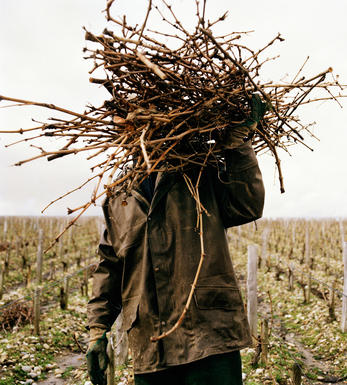
2015 Château de Fonbel, St Emilion, Bordeaux

Critics reviews
Neal Martin - The Wine Advocate #224 - April 2016
James Suckling - jamessuckling.com - Apr 2016
Drink: 2019-2027
James Lawther MW - decanter.com - April 2016
About this WINE

Chateau de Fonbel
Château de Fonbel is located in the Saint Emilion wine appellation and covers 16 hectares (39 acres) of vineyard. It is owned by Alain Vautier, proprietor of the celebrated Ch. Ausone and the highly regarded Ch. Moulin St. Georges.
Four grape varieties are grown for Château de Fonbel wine: Merlot (70%) dominates, supplemented by Cabernet Sauvignon (20%), Petit Verdot (7%) and Carmenere (3%). The wines are aged in 30% new oak barrels.

St Émilion
St Émilion is one of Bordeaux's largest producing appellations, producing more wine than Listrac, Moulis, St Estèphe, Pauillac, St Julien and Margaux put together. St Emilion has been producing wine for longer than the Médoc but its lack of accessibility to Bordeaux's port and market-restricted exports to mainland Europe meant the region initially did not enjoy the commercial success that funded the great châteaux of the Left Bank.
St Émilion itself is the prettiest of Bordeaux's wine towns, perched on top of the steep limestone slopes upon which many of the region's finest vineyards are situated. However, more than half of the appellation's vineyards lie on the plain between the town and the Dordogne River on sandy, alluvial soils with a sprinkling of gravel.
Further diversity is added by a small, complex gravel bed to the north-east of the region on the border with Pomerol. Atypically for St Émilion, this allows Cabernet Franc and, to a lesser extent, Cabernet Sauvignon to prosper and defines the personality of the great wines such as Ch. Cheval Blanc.
In the early 1990s there was an explosion of experimentation and evolution, leading to the rise of the garagistes, producers of deeply-concentrated wines made in very small quantities and offered at high prices. The appellation is also surrounded by four satellite appellations, Montagne, Lussac, Puisseguin and St. Georges, which enjoy a family similarity but not the complexity of the best wines.
St Émilion was first officially classified in 1954, and is the most meritocratic classification system in Bordeaux, as it is regularly amended. The most recent revision of the classification was in 2012

Merlot
The most widely planted grape in Bordeaux and a grape that has been on a relentless expansion drive throughout the world in the last decade. Merlot is adaptable to most soils and is relatively simple to cultivate. It is a vigorous naturally high yielding grape that requires savage pruning - over-cropped Merlot-based wines are dilute and bland. It is also vital to pick at optimum ripeness as Merlot can quickly lose its varietal characteristics if harvested overripe.
In St.Emilion and Pomerol it withstands the moist clay rich soils far better than Cabernet grapes, and at it best produces opulently rich, plummy clarets with succulent fruitcake-like nuances. Le Pin, Pétrus and Clinet are examples of hedonistically rich Merlot wines at their very best. It also plays a key supporting role in filling out the middle palate of the Cabernet-dominated wines of the Médoc and Graves.
Merlot is now grown in virtually all wine growing countries and is particularly successful in California, Chile and Northern Italy.


Buying options
Add to wishlist
Description
Made by the same team as the legendary Ch. Ausone, it is hardly surprising that Fonbel's 2015 is so tasty. It is a super wine in its class. Creamy, rich and bright on the nose, the polished lick of oak provides a peppery edge. Ripe, plummy Merlot fruit is in the ascendency, held in check by a crisp acidity and well-judged tannins.
The pure nose of plums and smoky black fruit leads seamlessly onto a finely textured palate. Lovely length and fruit on the finish, this is a really great wine for the table five years from the vintage.
Blend: 80% Merlot, 10% Cabernet Sauvignon, 5% Carménère, 5% Petit Verdot
wine at a glance
Delivery and quality guarantee